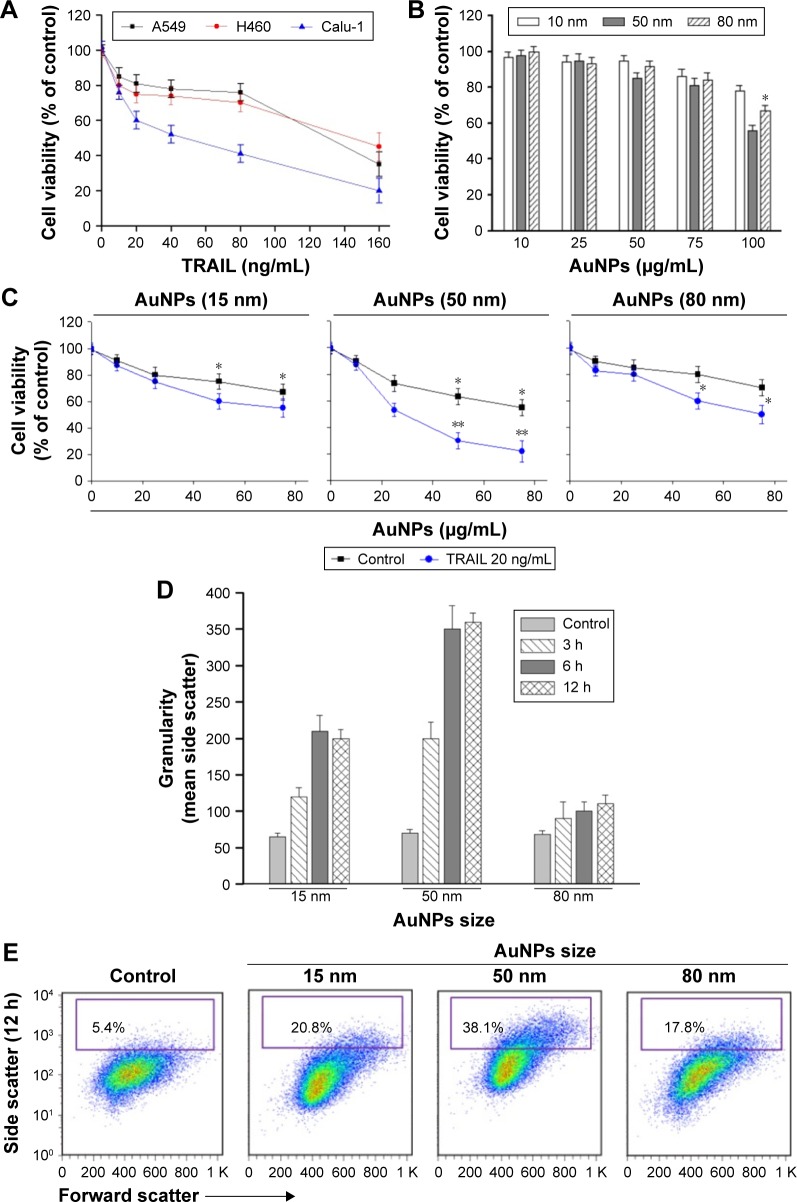Figure 2.
AuNPs sensitize NSCLC cells to TRAIL.
Notes: (A) Calu-1 cells, A549 cells, and H460 cells were exposed to the indicated concentrations of TRAIL for 24 h, and cell viability was then analyzed by MTT assay. (B) The size effect of AuNPs on BEAS-2B cells. BEAS-2B cells were exposed to AuNPs at the doses up to 100 μg/mL for 24 h, and then cell viability was measured using the MTT assay. *P<0.05, compared to untreated control. (C) The size effect of AuNPs on TRAIL sensitivity. Calu-1 cells were pretreated with the indicated concentrations of various AuNPs for 6 h, followed by incubation with 20 ng/mL TRAIL for an additional 24 h, and then cell viability was determined by MTT assay. Values are mean ± SD (n=3). *P<0.05, **P<0.01 compared to groups without TRAIL treatment. (D) Cellular uptake of various AuNPs was quantified using light SSC properties by flow cytometry. The graph shows the uptake amount of nanoparticles after incubation with 50 μg/mL AuNPs at different time points. (E) Typical flow cytometric SSC data at 6 h post-treatment were presented. Changes in cellular SSC following treatment reflected the uptake potential of the particles.
Abbreviations: AuNPs, gold nanoparticles; MTT, 3-(4,5-Dimethylthiazol-2-yl)-2,5-diphenyltetrazolium bromide; NSCLC, non-small-cell lung cancer; SD, standard deviation; SSC, side scatter; TRAIL, tumor necrosis factor-related apoptosis-inducing ligand.

